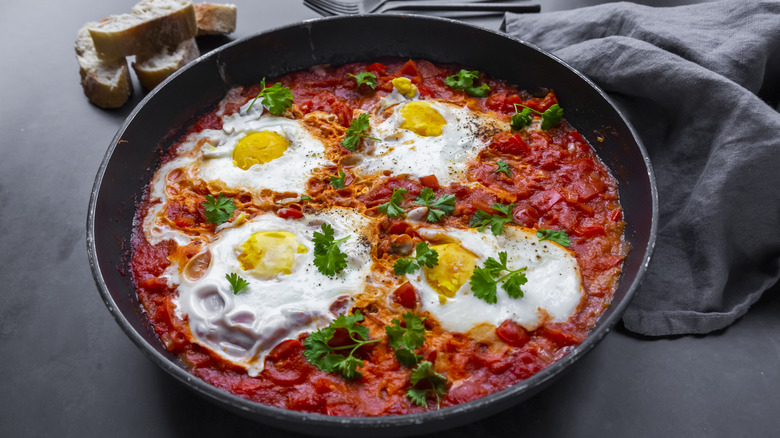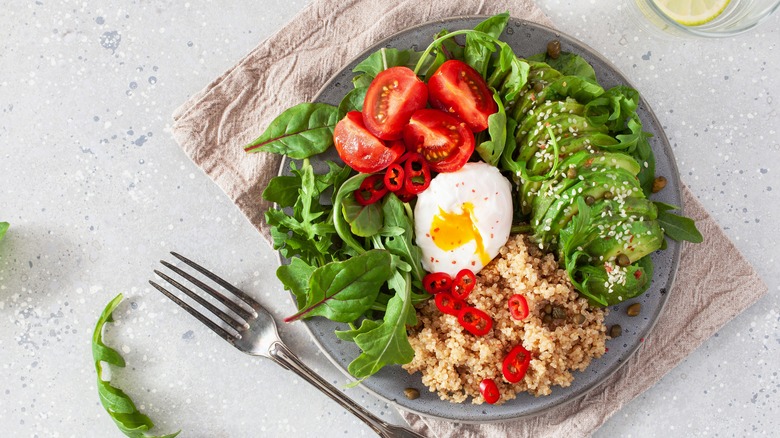Take Poached Eggs Beyond Breakfast By Adding Them To These Tasty Dishes
Poached eggs occupy that nebulous territory between boiled and fried — like the former, they're cooked in a water bath, but like the latter, they're out of their shells when the cooking takes place. While poaching may not be the easiest of egg-cooking methods (that honor most likely goes to scrambled eggs), it's not difficult to make the best poached eggs as long as your eggs are fresh and the water temperature is just right. (It also helps to crack the egg into a cup first and add a splash of vinegar to the water.) One of the biggest mistakes you're making with poached eggs, however, may be thinking of them as a one-trick pony. Nelson Serrano-Bahri, chef and director of innovation at the American Egg Board, told Mashed in an exclusive interview, "Poached eggs are typically associated with eggs Benedict, but they can elevate almost any dish."
One of his favorite ways to poach eggs is to combine them with sauce. He likes to cook them shakshuka style (eggs in purgatory is another shakshuka-adjacent dish in which eggs poach in tomato sauce), but he also enjoys them simmered in tikka masala sauce. If you're poaching your eggs in sauce, though, make sure they're completely cooked before eating them. "To ensure food safety," Serrano-Bahri said, "eggs should always be cooked to 160 degrees Fahrenheit."
Poached eggs also pair perfectly with salads and ramen noodles
Besides cooking poached eggs in sauce, Nelson Serrano-Bahri also enjoys them in salads. One of his favorites is an egg-topped warm grain salad with roasted vegetables and vinaigrette. As he explained to Mashed, "The runny yolk adds richness and combines beautifully with the dressing and salad." Poached eggs also taste great atop a bed of greens, whether you eat the salad for breakfast (yes, we said breakfast) or dinner.
Another thing a poached egg can do is turn a bowl of ramen into a complete meal. In fact, you can even poach the egg right in the pot as the noodles are cooking as a much quicker and easier alternative to making a soft-boiled egg. While the latter requires a bit of foresight and a timer, all you need to do for a poached ramen egg is to crack one into the broth and watch for the white to set up and the yolk to thicken. The residual heat from the noodles can even poach the egg once you've turned off the heat, which means that you can even accomplish this with a styrofoam cup of instant noodles. If the egg's not quite done by the time the noodles are soft, you can finish it off with 30 seconds or so in the microwave. Just be sure to poke a hole in the yolk first so the egg doesn't burst and make a splattery mess.

